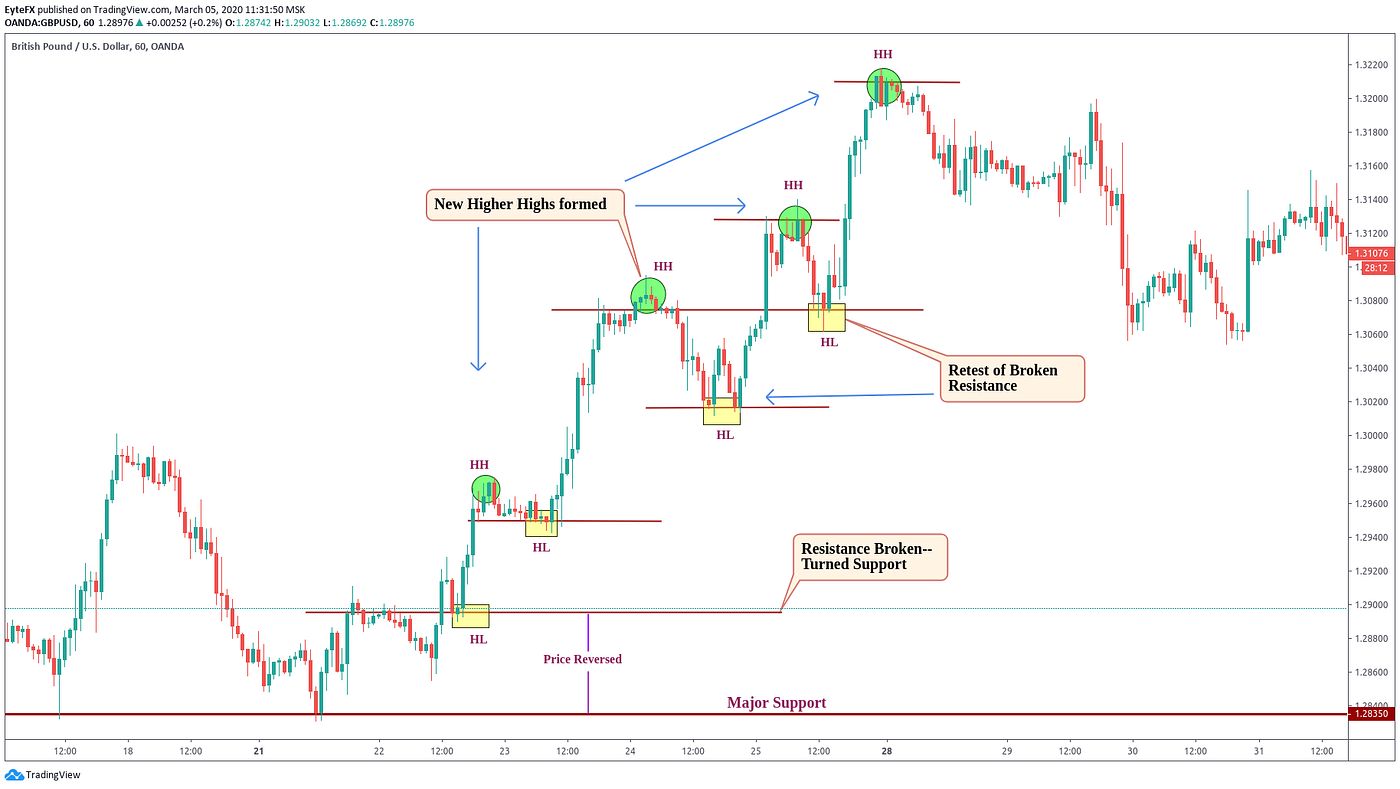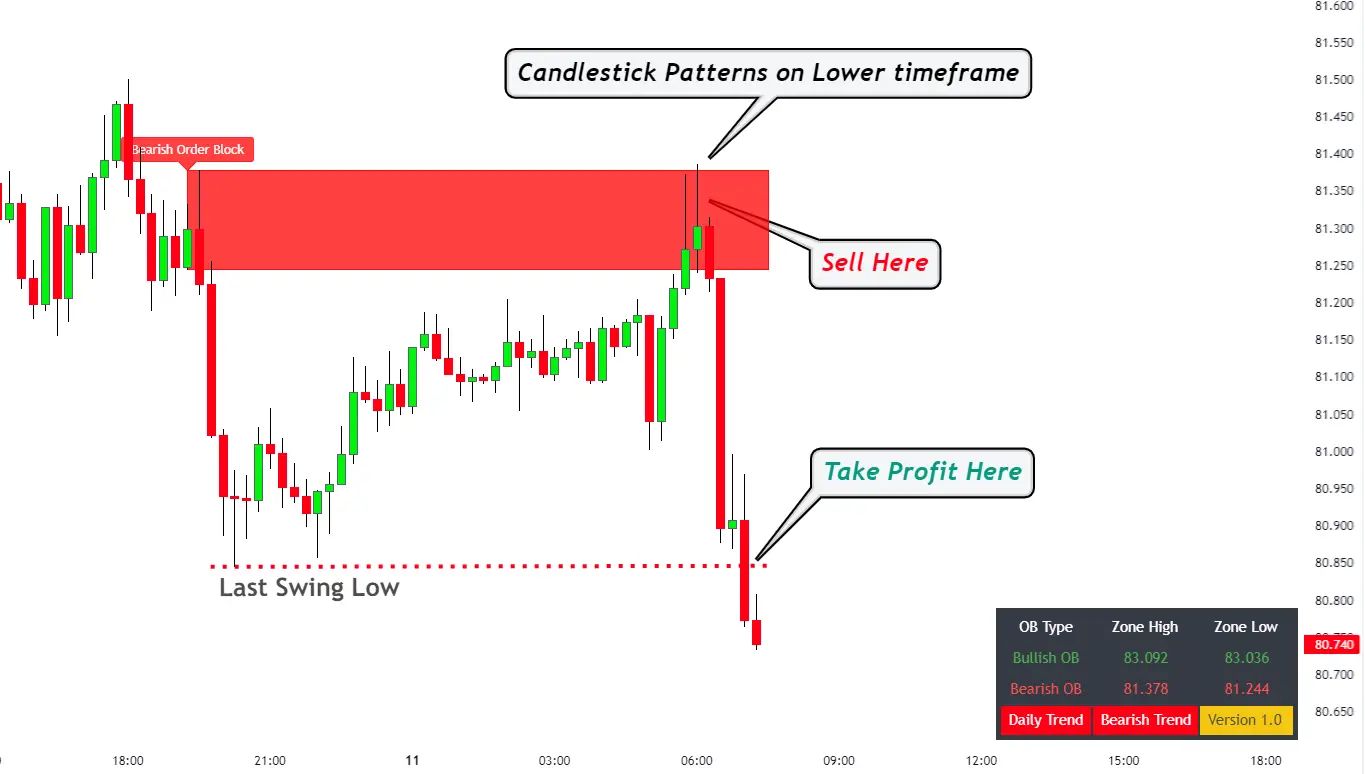Introduction
Welcome to the fascinating world of market structure in trading. Whether you’re a seasoned trader looking to refine your strategies or a newcomer trying to grasp the dynamics of the financial markets, understanding market structure is essential. It provides valuable insights into how prices are determined, how orders are executed, and ultimately, how the market functions.
Market structure refers to the organization and framework within which trading takes place. It encompasses various participants, rules, and mechanisms that influence the buying and selling of financial instruments such as stocks, bonds, currencies, and commodities. By understanding the nuances of market structure, traders can make more informed decisions and capitalize on profitable opportunities.
With the advancements in technology and the rise of electronic trading platforms, the dynamics of market structure have evolved significantly. Traditional exchanges have transformed, and new marketplaces have emerged, all contributing to the complex landscape of today’s financial markets.
Throughout this article, we’ll explore the key concepts of market structure, different types of market structures, and the factors that influence them. We’ll delve into the benefits of understanding market structure and how it can help traders gain a competitive edge in the market.
So, whether you’re an individual trader or represent a financial institution, buckle up and get ready to unravel the intricacies of market structure in trading. By the end of this article, you’ll have a solid foundation to navigate the markets with confidence and make more informed trading decisions.
What is Market Structure?
Market structure refers to the arrangement and characteristics of a market, including the participants, rules, and mechanisms that govern trading activities. It provides an understanding of how markets are organized, how prices are determined, and how orders are executed.
At its core, market structure defines the interaction between buyers and sellers, as well as the infrastructure that facilitates trading. It can be seen as the framework within which market participants engage in the buying and selling of financial instruments.
In a highly regulated market, such as a stock exchange, the market structure is well-defined and follows established rules and procedures. On the other hand, in less regulated markets, such as over-the-counter (OTC) markets, the structure may be more flexible and decentralized.
Market structure provides transparency and efficiency, ensuring fair and orderly trading. It sets the foundation for price discovery, allowing buyers and sellers to determine the equilibrium price at which they are willing to transact.
Key elements of market structure include:
- Market Participants: These are the individuals or entities engaged in buying or selling financial instruments. They can include individual traders, institutional investors, market makers, broker-dealers, and other intermediaries.
- Trading Mechanisms: Market structure defines the mechanisms through which orders are executed. These mechanisms can include auction-style trading, where buyers and sellers submit bids and offers, or dealer-based trading, where trades are executed through market makers.
- Order Types: Different types of orders can be placed in a market, such as market orders, limit orders, stop orders, and more. Market structure determines how these orders are processed and executed.
- Market Regulation: Regulatory bodies play a crucial role in maintaining market integrity and ensuring fair trading practices. Market structure incorporates relevant regulations and oversight to protect investors and maintain market confidence.
Overall, market structure encompasses the rules and mechanisms that shape the dynamics of trading. By understanding market structure, traders can gain a deeper appreciation of how markets function and use this knowledge to their advantage.
Importance of Understanding Market Structure
Understanding market structure is crucial for any trader who aims to navigate the financial markets successfully. It provides valuable insights into the dynamics of supply and demand, price discovery, and order execution. Here are some key reasons why understanding market structure is essential:
1. Trade Execution: Market structure influences how orders are executed. By understanding the trading mechanisms and order types in a particular market, traders can choose the most appropriate strategies to optimize their trade execution. This knowledge can help traders avoid pitfalls such as slippage and enhance their chances of getting desirable prices.
2. Price Discovery: Market structure plays a pivotal role in price discovery. It provides a platform for buyers and sellers to interact, leading to the determination of market prices. By understanding the market structure, traders can interpret the price movements more effectively and identify potential trends and reversals.
3. Risk Management: Market structure knowledge is essential for effective risk management. Traders need to be aware of factors that can impact the liquidity of a market, such as the presence of market makers or the volume of orders. By understanding market structure, traders can assess the levels of liquidity and adjust their trading strategies accordingly to minimize their exposure to risk.
4. Market Manipulation: Understanding market structure is crucial in identifying and mitigating market manipulation risks. Knowledge of the participants involved in a market and the regulatory framework can help traders identify potential manipulative activities and avoid falling victim to fraudulent schemes that distort market prices.
5. Trading Strategies: Market structure knowledge facilitates the development of effective trading strategies. Traders can design strategies that align with the specific characteristics and rules of a market, enhancing their ability to capitalize on profitable opportunities. Different market structures may require different tactics, and being aware of these nuances can lead to more successful trading outcomes.
6. Competitive Advantage: Understanding market structure provides traders with a competitive edge. By having a deeper understanding of the market’s intricacies, traders can anticipate and react to market movements more effectively than those who lack this knowledge. This advantage can help traders identify unique opportunities and stay ahead in the fast-paced world of trading.
Ultimately, understanding market structure empowers traders to make more informed decisions and navigate the intricacies of the financial markets with confidence. It is a foundation that supports successful trading and enables traders to adapt to various market conditions, ultimately improving their chances of achieving their trading goals.
Basic Concepts of Market Structure
Market structure encompasses several fundamental concepts that are essential to understanding how markets operate. These concepts provide insights into the organization, functioning, and dynamics of trading activities. Let’s explore some of the basic concepts of market structure:
1. Liquidity: Liquidity refers to the ease of buying or selling a financial instrument without significantly affecting its price. It is an important aspect of market structure as it determines the ability to enter or exit positions quickly. Highly liquid markets have more participants and higher trading volumes, offering better opportunities for traders to execute their orders.
2. Order Book: The order book is a record of all outstanding buy and sell orders for a particular financial instrument. It displays the price, quantity, and trader details for each order. Traders can analyze the order book to gain insights into the supply and demand dynamics in the market and assess the depth of the market at various price levels.
3. Market Depth: Market depth refers to the quantity of contracts or shares available at various price levels in the order book. It indicates the liquidity of a market and helps traders gauge the potential impact of their orders on prices. Markets with greater market depth offer more flexibility for traders to execute larger orders without significantly affecting the market price.
4. Spreads: The spread is the difference between the buy (bid) and sell (ask) prices of a financial instrument. It represents the cost of executing a trade. Tight spreads are desirable for traders as they minimize transaction costs. Market structure influences the spread by determining the number of market participants and the efficiency of order execution.
5. Market Transparency: Market transparency refers to the availability of relevant information to market participants. Transparent markets provide comprehensive data on prices, trading volumes, and order book information. This transparency allows traders to make informed decisions and have a clear understanding of market conditions.
6. Market Access: Market structure determines how traders access the market. It can involve direct participation through brokerage firms, electronic trading platforms, or exchanges. Access can also be indirect through intermediaries such as market makers or liquidity providers.
7. Matching Algorithms: Matching algorithms are mechanisms used to match buy and sell orders in a market. Different market structures use various matching algorithms, such as price-time priority or pro-rata allocation. Understanding these algorithms helps traders anticipate how orders are executed and assess the fairness of the execution process.
By grasping these basic concepts of market structure, traders can develop a more comprehensive understanding of market dynamics and make more informed trading decisions. These concepts provide a foundation for analyzing and navigating the complexities of the financial markets.
Types of Market Structures
Market structures can vary significantly based on the organization, rules, and participants involved in the trading process. Understanding the different types of market structures is essential for traders to navigate and adapt to specific market environments. Let’s explore some common types of market structures:
1. Auction Market Structure: In an auction market structure, buyers and sellers come together to place bids and offers, and transactions occur at a single prevailing price determined through the auction process. This type of market structure is commonly found in traditional stock exchanges, where participants submit their orders, and the exchange matches them based on price and time priority.
2. Dealer Market Structure: In a dealer market structure, trading occurs through market makers or dealers who buy and sell securities directly from their own inventory. Dealers provide liquidity to the market by quoting bid and ask prices at which they are willing to buy or sell the securities. This structure is prevalent in over-the-counter (OTC) markets, such as the foreign exchange market, where participants can trade directly with dealers.
3. Hybrid Market Structure: A hybrid market structure combines elements of both auction and dealer market structures. It integrates the benefits of a centralized exchange with the flexibility of dealer-based trading. Hybrid markets use electronic order matching systems like auctions but also allow designated market makers to provide liquidity and facilitate trading. This structure offers the advantages of both transparency and liquidity.
4. Dark Pools: Dark pools are a type of market structure that allows participants to trade securities away from public exchanges. Dark pools provide anonymity to traders and offer an alternative to traditional exchanges, especially for large institutional orders. The lack of transparency in dark pools can make it challenging to gauge the true market depth and volume at a given price level.
5. Electronic Communication Networks (ECNs): ECNs are electronic trading platforms that facilitate the matching of buy and sell orders from various market participants. Unlike traditional exchanges, ECNs operate without a physical trading floor and allow participants to interact directly with each other. This market structure offers greater efficiency and accessibility, particularly for high-frequency trading and individual traders.
6. Centralized vs. Decentralized Market Structures: Market structures can also be categorized based on their centralization. Centralized market structures, such as traditional stock exchanges, have a single location or platform where orders are matched. Decentralized market structures, such as cryptocurrency exchanges, operate across multiple platforms and can provide greater accessibility and liquidity, but may also involve additional risks.
It is important for traders to familiarize themselves with the specific characteristics and rules of the market structure they are operating in. Each market structure has its own advantages and challenges, and understanding them allows traders to tailor their strategies and approaches accordingly.
Auction Market Structure
Auction market structure is a type of market organization in which trading occurs through an auction process. It is commonly associated with traditional stock exchanges, where buyers and sellers come together to place bids and offers, and transactions are executed at a single prevailing price determined through the auction.
In an auction market structure, participants submit their buy and sell orders to the exchange. These orders are then matched based on price and time priority. The exchange collects and consolidates these orders to determine the equilibrium price at which the maximum amount of trading can occur.
There are two main types of auctions within this market structure:
1. Continuous Auction: In a continuous auction, trading occurs continuously throughout the trading day. Orders are matched instantaneously as they are entered into the system based on their price and time priority. Continuous auctions provide real-time price discovery and the ability for participants to enter or exit trades at any time during the trading session.
2. Call Auction: In a call auction, trading occurs at specific predetermined times. Participants submit their orders before the auction period, and the orders are matched at a single price known as the auction price. Call auctions are typically held at the beginning and end of each trading session and provide an opportunity for all participants to transact at the same price.
Auction market structures offer several advantages:
- Price Transparency: Auction markets provide transparent price discovery mechanisms where the prevailing price is publicly visible to all participants. This transparency allows traders to make informed decisions based on the current market conditions.
- Equal Access to Liquidity: All participants in an auction market have equal access to liquidity, as orders are matched based on their price and time priority. This ensures fair and equal treatment for all market participants.
- Price Efficiency: Auction markets aim to match as many buy and sell orders as possible at the prevailing market price, allowing for price efficiency and fair valuation of financial instruments.
- Market Integrity: Auction markets are typically regulated and monitored, ensuring market integrity and adherence to established rules and regulations. This provides a level playing field for all participants and fosters confidence in the market.
However, auction market structures also come with some limitations. For example, in some cases, the process of matching orders may not be instantaneous, resulting in a delay between order submission and execution. Additionally, large orders can potentially impact market prices due to the limited liquidity available at a specific price level.
Understanding the dynamics and rules of auction market structures is essential for traders to effectively participate in these markets. By comprehending the bidding process, order execution mechanisms, and price discovery process, traders can navigate auction markets with confidence and make informed trading decisions.
Dealer Market Structure
Dealer market structure is a type of market organization where trading occurs through market makers or dealers. In this structure, market makers facilitate the buying and selling of financial instruments by acting as intermediaries between buyers and sellers. Unlike auction market structures, where participants trade directly with each other, in dealer market structures, participants trade with the market maker or dealer.
In a dealer market structure, market makers provide liquidity by quoting bid and ask prices at which they are willing to buy or sell securities. They make money through the bid-ask spread, which represents the difference between the buying and selling prices. Market makers stand ready to buy or sell securities on behalf of their clients or from their own inventory, ensuring that there is always a counterparty available for trades.
There are several key features of dealer market structures:
- Liquidity Provision: Dealers play a crucial role in providing liquidity to the market. They ensure that there is always a market available for participants to buy or sell securities, even when there is limited trading interest.
- Two-way Quotes: Dealers continuously quote both bid and ask prices for the securities they trade. This two-way pricing allows participants to trade at a known price and provides transparency in the market.
- Price Discovery: In dealer market structures, market makers play a significant role in price discovery. They assess the supply and demand dynamics and adjust their bid-ask prices accordingly, reflecting the current market conditions.
- Market Depth: Market depth in dealer market structures depends on the number of active market makers and their willingness to provide liquidity. High market depth ensures that there is sufficient volume available for participants to execute their orders.
Dealer market structures are commonly found in over-the-counter (OTC) markets, such as the foreign exchange market, where participants trade directly with dealers. OTC markets offer flexibility and accessibility to a wide range of participants, including individual traders and institutional investors.
While dealer market structures offer several advantages, such as continuous liquidity and flexibility, there are also some potential limitations to consider. Market makers may have information advantages over other participants, which can lead to potential conflicts of interest. Additionally, the bid-ask spread charged by market makers adds a cost factor to trading, which participants need to take into account.
Understanding dealer market structures is important for traders as it allows them to navigate OTC markets effectively. By comprehending the roles of market makers, the pricing mechanisms, and the implications of trading with dealers, participants can make informed trading decisions and take advantage of the liquidity and flexibility offered by dealer market structures.
Hybrid Market Structure
Hybrid market structure combines elements of both auction and dealer market structures, offering a unique blend of centralized exchange trading and decentralized dealer-based trading. This type of market structure aims to leverage the benefits of both models to provide participants with increased liquidity, flexibility, and transparency.
In a hybrid market structure, electronic order matching systems are used to facilitate the trading process, similar to auction markets. Participants can submit their orders electronically, and these orders are matched based on price and time priority. This electronic matching ensures efficient and fast execution of trades.
However, in a hybrid market structure, designated market makers (DMMs) or liquidity providers also play a critical role. These market participants act as intermediaries, offering continuous liquidity by posting bid and ask prices at which they are willing to buy or sell securities. They help bridge any gaps in liquidity and ensure that there is ample supply and demand in the market.
Some key features of hybrid market structures include:
- Market Transparency: Hybrid market structures offer transparency in pricing, allowing participants to see real-time bid and ask prices. This transparency helps traders make informed decisions based on the best available market information.
- Flexibility: Hybrid markets provide greater flexibility than traditional auction markets. Participants can execute trades at any time during the trading session, taking advantage of both the centralized exchange matching as well as the liquidity provided by the market makers.
- Liquidity Provision: DMMs or liquidity providers in hybrid market structures ensure that there is continuous liquidity available in the market. They help maintain market depth, reduce spreads, and improve order execution for participants.
- Price Discovery: Hybrid market structures incorporate both electronic matching and market maker quotes, contributing to price discovery. Participants can rely on both the centralized exchange pricing and the liquidity provided by market makers to determine fair market values.
- Regulation: Hybrid markets are subject to regulations and oversight to ensure fair trading practices. Regulatory bodies monitor the activities of both the exchange platform and the market makers to maintain the integrity of the market.
Hybrid market structures are commonly found in many modern securities exchanges and derivatives markets. They aim to combine the benefits of auction markets, such as price transparency and efficient order matching, with the advantages of dealer markets, such as continuous liquidity provision.
By understanding the dynamics of hybrid market structures, traders can take advantage of the liquidity and flexibility offered by these markets. They can make use of the electronic order matching system for quick execution and also benefit from the continuous liquidity provided by the market makers. This knowledge allows participants to navigate hybrid markets effectively and optimize their trading strategies.
Factors Influencing Market Structure
Market structure is influenced by various factors that shape the organization, rules, and dynamics of trading activities. Understanding these factors is key to comprehending the different types of market structures that exist. Here are some important factors that influence market structure:
1. Regulation: Regulations and government policies have a significant impact on market structure. Regulatory bodies, such as securities commissions or financial authorities, set rules and guidelines to ensure fair and orderly markets. These regulations dictate the requirements for market participants, trading processes, and the overall market infrastructure.
2. Technology: Technological advancements have transformed market structures. Electronic trading platforms, algorithmic trading systems, and high-frequency trading have become prevalent. Technology enables faster execution, increased market access, and enhanced price transparency. Market structures have evolved to incorporate these technological advancements and provide a more efficient trading experience.
3. Market Participants: The participants in a market greatly influence its structure. The presence of large institutional investors, hedge funds, retail traders, or market makers can shape the liquidity, trading volume, and overall trading environment. The behavior and strategies of the participants also impact market liquidity, price discovery, and trading dynamics.
4. Market Size and Liquidity: The size and liquidity of a market influence its structure. Larger and more liquid markets tend to have diverse participants, tighter spreads, and greater trading volume. Liquidity providers, such as market makers, play a critical role in ensuring market liquidity and influencing the structure of the market.
5. Market Concentration: Market concentration refers to the distribution of market share among market participants. In highly concentrated markets, a few dominant players may have a significant influence on market structure, pricing, and trading dynamics. Less concentrated markets may offer more opportunities for competition and the entry of new participants.
6. Market Demand and Supply: The demand and supply dynamics within a market can shape its structure. Higher demand and supply for a particular financial instrument may lead to increased trading activity, tighter spreads, and higher liquidity. Changing market dynamics, investor preferences, and economic factors can also influence the market structure over time.
7. Globalization and Market Integration: Globalization has led to the integration of markets across countries and continents. It has facilitated cross-border trading and the convergence of market structures. Market integration influences market structure by increasing market access, allowing for efficient price discovery across borders, and fostering a more interconnected and interdependent global financial system.
These factors interact with each other and continuously evolve, shaping the market structure in response to changing market conditions, technological advancements, and regulatory developments. Traders need to stay informed about these factors and their influence on market structure to adapt their trading strategies and capitalize on market opportunities effectively.
Benefits of Understanding Market Structure in Trading
Understanding market structure is crucial for traders to navigate the financial markets successfully and make informed trading decisions. It provides a range of benefits that can give traders a competitive edge. Here are some key advantages of understanding market structure in trading:
1. Enhanced Trade Execution: Knowledge of market structure helps traders optimize their trade execution. Understanding the mechanisms, order types, and trading rules allows traders to select the most appropriate strategies to execute their trades effectively. This can minimize slippage and improve the chances of getting desirable prices.
2. Improved Market Analysis: Understanding market structure enables traders to analyze market data and interpret price movements more effectively. Traders can identify market trends, support and resistance levels, and potential price reversals. This analysis can provide valuable insights for making informed trading decisions.
3. Efficient Risk Management: Market structure knowledge is vital for effective risk management. Traders can assess the levels of liquidity, volatility, and market depth. This understanding allows them to adjust their trading strategies, position sizes, and risk exposure based on market conditions. It helps minimize potential losses and manage risk effectively.
4. Competitive Advantage: Understanding market structure provides traders with a competitive advantage. By having a deeper comprehension of how the market functions and the behavior of market participants, traders can anticipate and react to market movements more effectively than those who lack this knowledge. It allows traders to identify unique opportunities and stay ahead in the fast-paced world of trading.
5. Effective Trade Planning: Market structure knowledge helps traders plan their trades and set realistic expectations. By understanding liquidity levels, bid-ask spreads, and the depth of the market, traders can determine appropriate entry and exit points for their trades. This planning increases the probability of executing trades at favorable prices.
6. Adaptation to Market Conditions: Market structure understanding allows traders to adapt their strategies to different market conditions. Traders can recognize whether the market is in an auction-like environment, dominated by market makers, or influenced by specific factors. This adaptability enables traders to adjust their approaches and tactics accordingly, enhancing their chances of success.
7. Capitalization on Market Opportunities: By understanding market structure, traders can identify and capitalize on market opportunities, such as price inefficiencies, breakouts, or mispricings. This ability to recognize and exploit advantageous situations can lead to profitable trades and improved trading performance.
In summary, understanding market structure is essential for traders as it provides valuable insights into trade execution, market analysis, risk management, and competitive advantage. It enables traders to plan their trades effectively, adapt to market conditions, and seize opportunities for profitable trades. By developing a comprehensive understanding of market structure, traders can enhance their trading strategies and achieve their desired trading goals.
Conclusion
Market structure plays a vital role in the world of trading, shaping the organization, rules, and dynamics of financial markets. Understanding market structure provides traders with valuable insights into how prices are determined, how orders are executed, and the behavior of market participants.
Throughout this article, we have explored the various aspects of market structure, including types such as auction markets, dealer markets, and hybrid markets. We have discussed the factors that influence market structure, such as regulation, technology, and market participants. Additionally, we have highlighted the benefits of understanding market structure, including enhanced trade execution, improved market analysis, efficient risk management, competitive advantage, effective trade planning, adaptation to market conditions, and capitalization on market opportunities.
By comprehending market structure, traders can navigate the complexities of the financial markets with confidence and make well-informed trading decisions. Understanding the different market structures empowers traders to tailor their strategies and approaches to the specific characteristics of each market. It allows them to adapt to different trading environments, capitalize on opportunities, and effectively manage risk.
It is essential for traders to stay updated on market structure developments, as market structures evolve with changes in technology, regulations, and economic conditions. By continuously learning and adapting, traders can stay ahead of the curve and maintain a competitive edge in the ever-changing world of trading.
So, whether you’re a novice trader looking to understand the basics of market structure or an experienced trader seeking to refine your strategies, embracing the concept of market structure will undoubtedly contribute to your success in the financial markets.

























